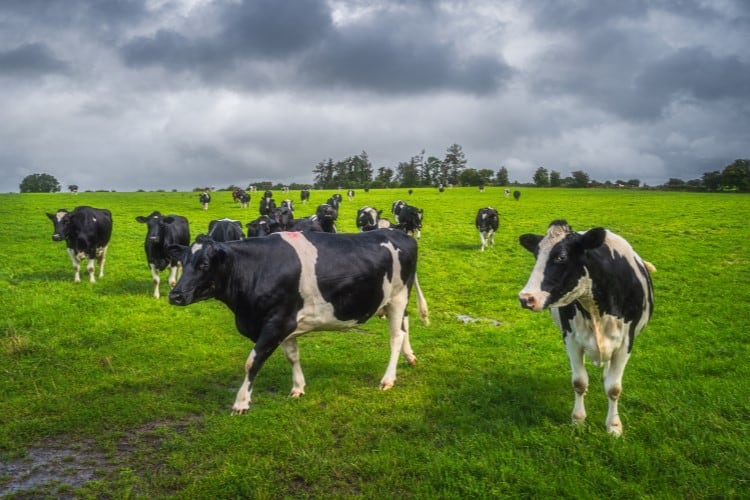British dairy producers have been quitting the industry in record numbers, according to the latest AHDB survey.
The data shows that there were around 7,130 producers in the UK in April 2024, which is 5.8% lower than a year ago. In comparison, there were 7,570 active producers in April 2023 and 7,500 in October 2023, suggesting that 440 farmers had called it quits during the winter. But with the average milk production per farm increasing and a flat growth in the average herd size, this points towards continued consolidation activity rather than a new industry trend.
According to Food Standards Agency (FSA) data - which is separate from AHDB's estimates - the largest loss of producers occurred in the North West (39) and the North of England (22), followed by the Midlands (16) and the Mid West (including Devon, Somerset and Wiltshire, where 13 producers de-registered). AHDB's data represents the number of producers actively supplying milk; whereas official bodies such as the FSA and Defra carry out checks less frequently or counts dairy holdings that are likely too small to be commercially active.
So why are UK dairy farmers leaving the sector? According to Freya Shuttleworth, AHDB senior analyst, livestock, there are a number of factors.
“Although milk prices are historically higher, when compared with the peaks in 2022 they have dropped off substantially. This, alongside robust cull cow prices, continued inflationary pressure on key inputs - such as feed fuel and energy - and increased interest rates driving up the cost of borrowing, may have incentivised producers to shut up shop as farm margins tighten.
As of June 2024, the average UK farmgate milk price was 38.43ppl, according to Defra; that’s 13.08ppl less than the highest price paid to farmers in 2022, and 1.53ppl less than June 2023.
As for input costs, fertilizer prices have remained largely stable since mid 2023 but fuel costs have increased 3.5% year on year.
In terms of land values, Savills' 2024 Farmland Market report estimates that land values in England grew 4% on average in 2023, with high land availability in the north. In Scotland, values were flat in 2023 and stock was in negative territory. In Wales, prices soared 23% on average as the highest trading activity was recorded in the country in 23 years, with supply also increasing by over 40%.
“This also coincided with some of the wettest weather on record which interrupted forage production, and many cattle were housed earlier than usual and spring turn out delayed, putting pressure on forage and bedding stocks.
“For some producers, increased regulatory pressures (such as Nitrate Vulnerable Zones and slurry storage) could also have been a driver to leave the industry prior to making long-term investment decisions.
“It is also worth noting issues around succession, with some farms closing and/or selling up due to not having anyone available or willing to take over.”
Asked how significant the drop in producer numbers has been when has been when historical data is considered, she added: “We have only been carrying out our survey since 2019.
"Although the April 2024 figure is the largest drop we have seen, annual changes have previously varied between -1.9% and -4.7% - and so, this decline is not a new trend and instead a continuation of long-term industry changes."
“The largest fluctuation in milk price within this time period was seen in late 2021 and through 2022 when prices climbed steeply, producer numbers however continued to record negative change during this time,” she said.
UK dairy producer numbers have decreased by around 70% over the last 30 years with cow numbers also declining around 28% since the mid 1990s. But annual milk production has been increasing as producers have improved efficiency per cow. In the 2023/24 milk season, production was up 0.2% year on year.
So what does the future hold for British dairy – and how likely is it for producer numbers to go back up?
“There is always scope for new blood to come in, which should be encouraged,” Shuttleworth told us. “But the prevailing wind of consolidation is set to continue.
“Despite producer numbers falling, the dairy herd is relatively stable year on year. There has been a long-term trend of decline in dairy cow numbers; however, the industry has been successfully working hard to improve productivity, with average yields per cow higher and national milk production volumes relatively stable."
“The 2023/24 milk season ended with GB volumes back only 1.6% on the 2015/16 season - our earliest record - compared to an 11.5% fall in the milking herd during this time [January 2016 vs January 2024, ed.].
“Environmental regulations will focus the industry on improving efficiency further across the whole supply chain, from farm to shelf,” the analyst concluded.




